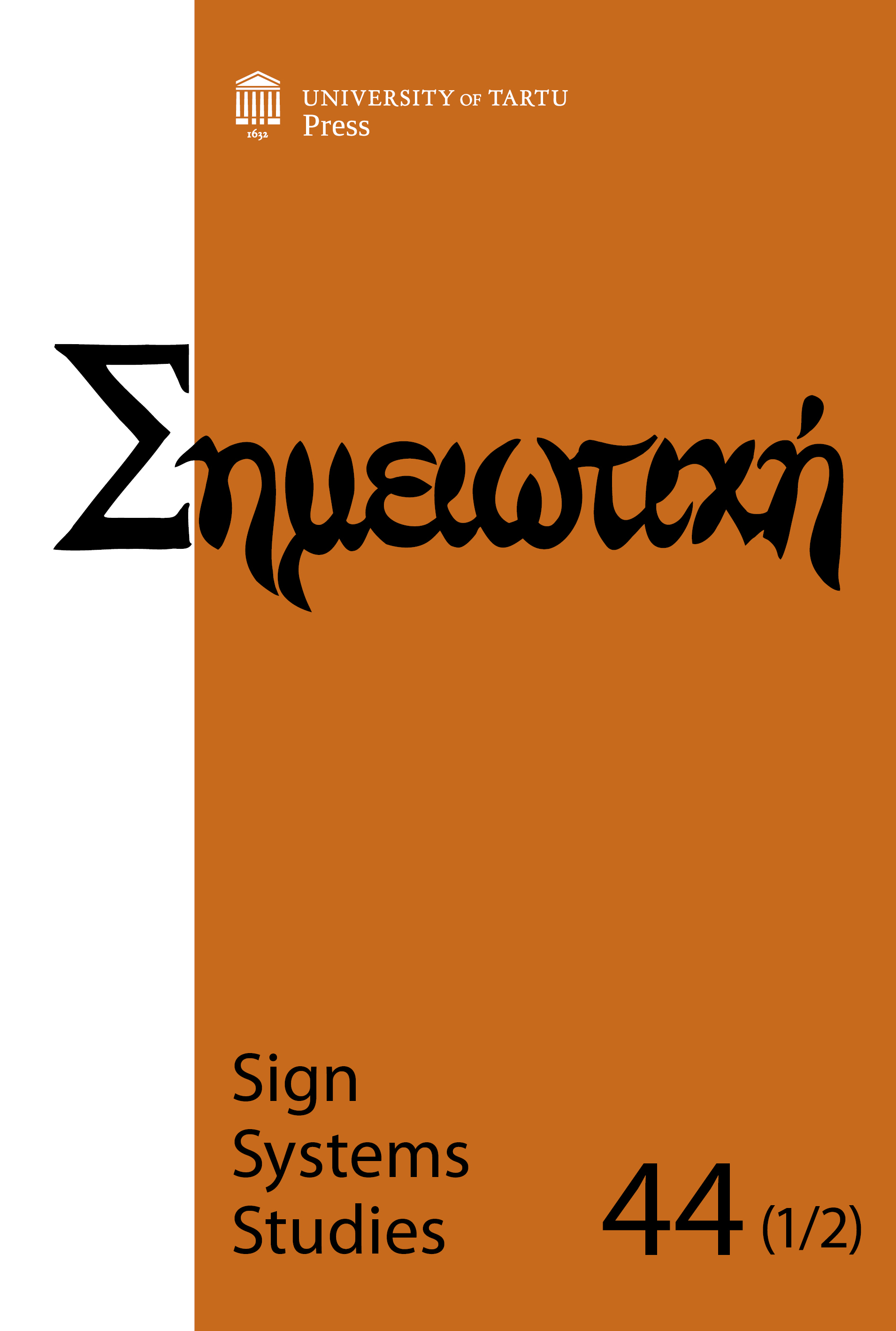The circle and the maze: Two images of ecosemiotics
DOI:
https://doi.org/10.12697/SSS.2016.44.1-2.05Keywords:
ecosemiotics, environment, Charles S. Peirce, Jakob von Uexküll, functional cycle, labyrinth, teleology, ecology of selvesAbstract
This article compares the work of Jakob von Uexküll and Charles S. Peirce to elucidate two contrasting yet connected images of ecosemiotics. The intent is not simply to oppose their work, but to explore a tension which has implications for the ethical dimension of this emerging discipline. Uexküll’s functional cycle is associated with the image of a circle, which, while emphasizing the integration of organism and environment, is shown to invoke solipsism, and an overly deterministic depiction of ecological relations. Peirce’s drawing of a labyrinth is taken to represent a maze, which, while exemplifying the evolutionary play of ecosystems, may entail a level of unpredictability that is catastrophically chaotic. The root of these diverging depictions is identified with the role of subjectivity in engendering semiotic relations in the work of both Uexküll and Peirce. Where the more regressive aspects of Uexküll’s theoretical biology are mitigated by a teleological interpretation of life’s underlying causality, orientating agency within Peirce’s work depends upon attention to the idea of the self in his philosophy of signs. In conclusion, Eduardo Kohn’s conception of an ‘ecology of selves’ is cited, and the status of the organism as a living symbol of its environment is reaffirmed.Downloads
Download data is not yet available.
Downloads
Published
2016-07-05
How to Cite
Clements, M. (2016). The circle and the maze: Two images of ecosemiotics. Sign Systems Studies, 44(1/2), 69–93. https://doi.org/10.12697/SSS.2016.44.1-2.05
Issue
Section
Articles


